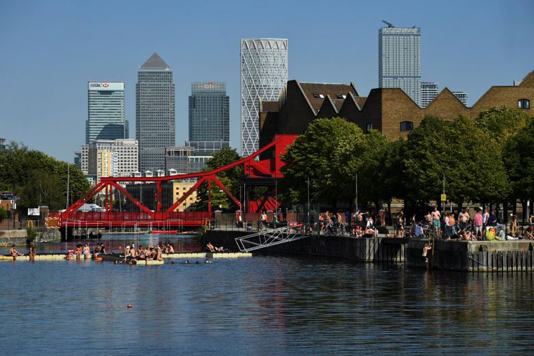LONDON, Aug 12, 2020 (BSS/AFP) – Britain will on Wednesday officially
enter recession, with figures set to show an economic collapse of around 20
percent of GDP in the second quarter — the worst contraction in Europe.
The Office for National Statistics (ONS), which is due to unveil the
latest assessment at 0600 GMT, is uniformly expected to confirm the
unprecedented contraction between April and June.
It will be Britain’s first recession since the 2008 financial crisis. The
predicted drop in gross domestic product reflects the mammoth fall in
economic activity nationwide during the quarter due to the lockdown imposed
to tackle the pandemic.
Economists polled by Bloomberg have on average predicted a decline of 20.7
percent in the second quarter, compared to the first three months of the
year.
The UK economy contracted by 2.2 percent in the first quarter and, with a
recession defined as two successive quarters of decline, together with
Wednesday’s results herald the country’s first in a decade.
Initial figures already released show economic activity plunged around 20
percent in April, before rebounding slightly in May thanks to the first
easing of restrictions.
The grim economic news comes despite unprecedented government
interventions, including spending tens of billions of pounds on job support
schemes in a bid to avoid mass layoffs.
Meanwhile the Bank of England (BoE) has launched massive asset buybacks
and cut interest rates to historic lows that are almost zero.
If Britain’s GDP drops by more than 20 percent, it will have posted the
worst performance in the second quarter in Europe, ahead of Spain (-18.5
percent) and France (-13.8 percent).
The country — which already has the highest death toll in Europe from the
virus — appears to be paying a heavier price for locking down later than its
continental neighbours earlier in the year.
The British economy also relies more heavily on the hard-hit services
sector than other European nations.
– ‘Won’t be pretty’ –
The recession is already wreaking havoc, with ONS data released Monday
showing around 730,000 UK workers have been removed from the payrolls of
British companies since March.
Announcements of job cuts have become a daily occurrence, with firms
expected to pick up the pace of layoffs as the government’s key employment
support scheme ends in October.
The unemployment rate is expected to soar in the months ahead, with
millions set to turn to government benefit programmes.
“Whatever the numbers are, and they won’t be pretty, the more important
question is how quickly the UK economy can bounce back,” said Michael Hewson,
analyst at CMC Markets.
“We have seen some progress on that,” he added.
Finance Minister Rishi Sunak has appeared cautious about the pace of the
recovery, telling Sky News last week “there is hardship ahead for many
people” while noting there was “hope”.
Meanwhile members of the Bank of England have been divided over how
quickly Britain will return to economic normalcy.
Recent indicators suggest a strong rebound in many industries, from retail
sales — which saw a boost from businesses reopening in June — to other
private sector activity such as construction.
In its forecast released last week, the BoE was less pessimistic about the
fall in GDP for the whole of 2020, forecasting a drop of 9.5 percent.
But at the same time, it said it expects a slower recovery in 2021 and
warned that the economy would not return to its pre-pandemic level until
2022.



